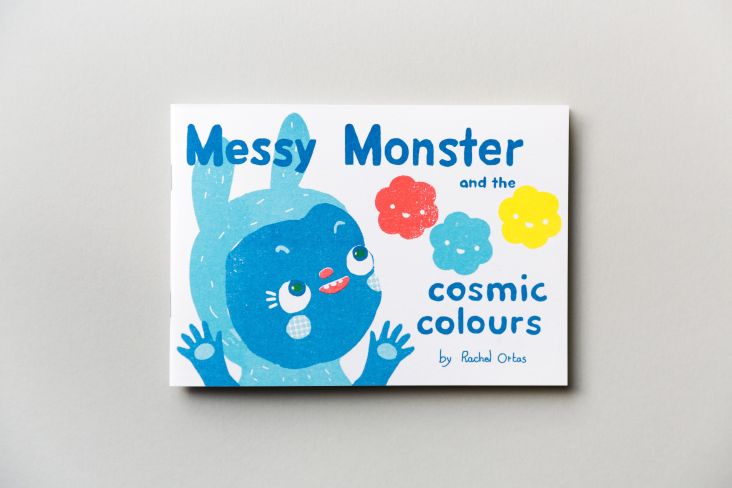How to make your first online sale and win customer loyalty
You've crafted your products and launched your online shop. Chosen a business name and sorted your branding.

Image licensed via Adobe Stock
You are more than ready to sell your stuff to the world. But how do you achieve that first sale when there's so much competition out there?
There is no easy answer. Making products to sell online is only half the story. Now you have to promote yourself and put your products in front of as many potential customers as possible.
Not just anyone either; you have to target the right people who'll fall in love with your shop and everything in it. The following tips will get you thinking about a marketing plan and how you'll focus on promoting yourself from this day forth.
Consider the target market
First and foremost, you've got to know thy customer. Who are they? How old are they and where do they live? What are their interests? Likes and dislikes? Where are they active online? Because if you don't know who you're selling to, how can you even begin to develop a marketing strategy?
Of course, you'll have a rough idea of who you want to target. A lot will be based on assumptions. But it's an excellent place to start. Present & Correct knows that it's selling to designers who love new and vintage stationery. Lucky Dip Club supports independent artists and designers and sells subscription packs to the creative community.
What do you sell and who to? Is there a clear journey from customer to checkout? You'll make life a lot easier for yourself if you focus on one target market because your strategy will start to reveal itself rather naturally once you know who you're hoping to reach.
Establish a relevant and coherent presence
To appeal to your target market, you have to keep them in mind and present your brand in a way that would specifically appeal to them. For those of you who are trying to achieve a more GoodHood look and feel, for example, you'll understand that you'll have a completely different brand to something like Tattly.
Your brand isn't just visual; it's also about the tone of voice and the language you use. But whether you're kitsch and cute or high-end and cool, your branding should always be consistent across all of your channels – your website, social media, marketing materials. They should all flow and be instantly recognisable as yours.
Because having a consistent presence paints a picture of quality, trust and reliability. It's a subtle but necessary way to make people buy from you and, of course, come back for more. Because you wouldn't buy from someone who looks like they're all over the place, would you?
Craft your content
Blogging is by no means dead. It continues to be an essential way to drive organic traffic and add credibility to your website. It's a way of showing people the "real" you – the person behind the brand. And that content extends to every other channel these days. What you write on your blog should match what you're sharing on Instagram, for instance.
Start with creating an editorial calendar that considers your product launches, critical annual dates (Valentine's Day, for example) and anything else that might prove relevant to your target audience. (Check out GatherContent.com – it's an excellent tool for organising and producing content.) From here, plan content for your blog and consider what you'll share on your social media channels too.
Step up your photography game
Your products deserve the best possible chance in life. They need great photography. Smartphone snaps (on older devices) with poor lighting just won't cut it. Not when there is so much at stake and plenty of competition kicking ass with their content.
It's quite simple. Buy a decent camera. We love the Olympus Pen F with a 45mm lens. Or the Fujifilm X-T10 with the 50mm lens. Take product shots in natural light wherever possible. Or use a portable light studio, like a Shotbox to get perfect lighting on products that you list on your online shop.
What's more, the latest iPhones have insanely decent cameras with the famous "portrait" mode to rival most DSLRs on the market. Truly. It's especially handy for your Instagram account – a superb channel that will help you build an audience, as long as your content is top-notch.
Only share the very best photography on Instagram and try and make everything flow beautifully. Use the wonderful Planoly app to visually plan, manage and schedule your Instagram posts from your computer or devices. You want to try and share one minimal image for every "busy" picture you upload. Check out the Snug Gallery as an excellent example of a perfectly coordinated Instagram feed.
Build an email a customer database
As soon as possible, start to build a customer database. You can do this by various means. For starters, use a third-party service such as Privy to create pop-up "join our list" lightboxes on your online shop to collect email addresses. Don't forget to offer a discount in exchange for people's details.
You can offer the same incentive whenever someone buys anything from you, adding yet more emails to your growing database. Don't forget to include a link to subscribe to your newsletter on your website's footer and in your email signature.
Once you have a list, you can start targeting people with your latest news, products and content. It's a great way to remind customers that you exist. For some extra advice, read our tips on creating powerful newsletters.
Send free samples to influencers
Journalists, bloggers, influencers – they're all happy to write about your products if you send them free samples. And you'll benefit enormously by tapping into their reach and gaining an extra layer of credibility by having them validate your stuff.
Sign up to a media database, such as Cision, to get access to relevant media contacts that you can target. Or, if that's too expensive at this stage, spend a few happy evenings on your iPad researching blogs that you love and think your audience will appreciate also.
The other option you have is to follow these influencers on social media and build relationships via Twitter and Instagram. Give back to the community and share their updates to your audience. Don't always expect to take, take, take. You have to remember these bloggers and journos are just people, and you should treat them as such.
Keep your strategy in mind and continuously analyse and review
Of course, there are loads of other ways to get your products out there. You could consider selling via wholesalers. Or list your products on Etsy, if that suits. There are affiliate marketing, Google AdWords and comparison shopping engines. You could even go down the route of Facebook advertising or running giveaways.
But there's no point in changing your strategy or spending more money on marketing until you know what is and isn't working. In which case, keep a close eye on your web analytics. See where traffic is coming from. Even watch whether people are abandoning their trolley because that first sale might not be happening due to something going wrong on your website.
Whatever you do, always focus on the customer. Understand who they are and what they love, and you'll be able to craft a cost-effective strategy that gets your brand out there and starts the pennies coming in. Get your brand right; make it coherent for credibility and start crafting your high-quality content. Become a publisher and have confidence in everything you do.
Spend at least an hour every day working on your marketing, and you'll not only secure that first sale, but you'll also encourage customers to come back for more.




 by Tüpokompanii](https://www.creativeboom.com/upload/articles/58/58684538770fb5b428dc1882f7a732f153500153_732.jpg)


 using <a href="https://www.ohnotype.co/fonts/obviously" target="_blank">Obviously</a> by Oh No Type Co., Art Director, Brand & Creative—Spotify](https://www.creativeboom.com/upload/articles/6e/6ed31eddc26fa563f213fc76d6993dab9231ffe4_732.jpg)
















